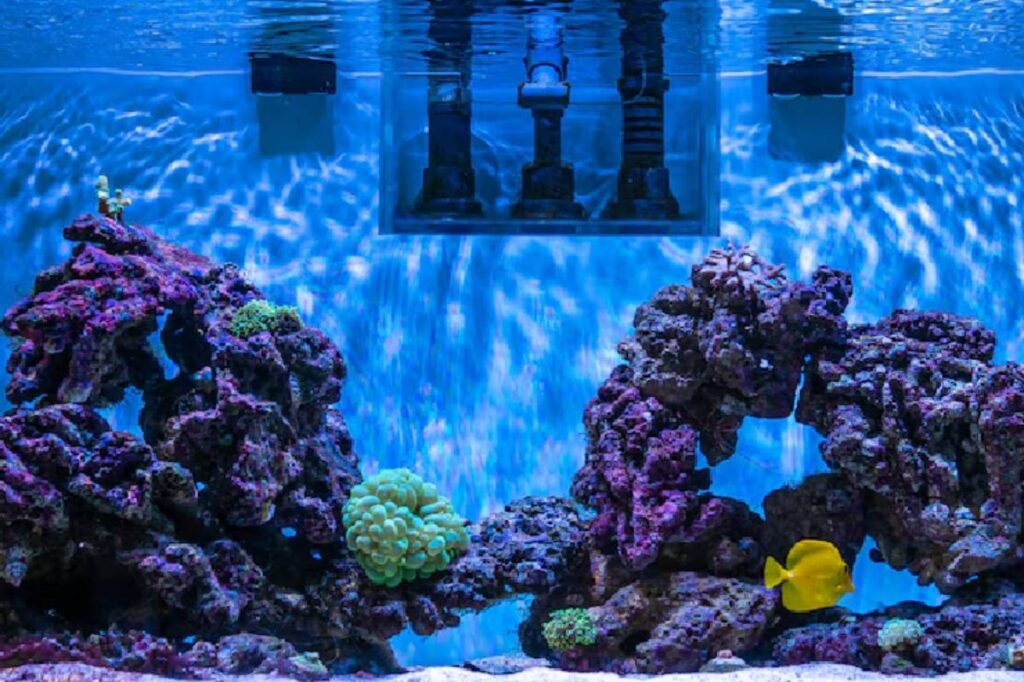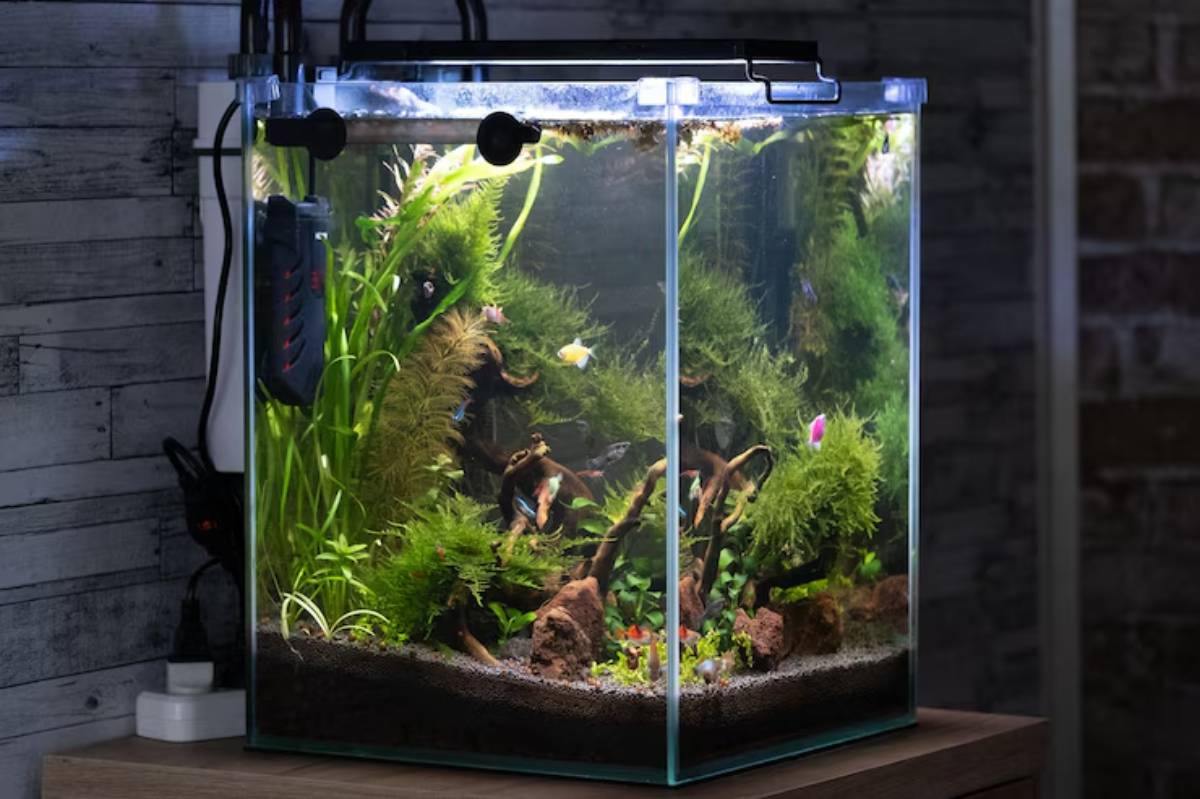The Pets Care Blog

Pros and Cons of Saltwater Aquariums: What Every Beginner Should Know
Saltwater aquariums are nothing short of magical. The shiny coral, bright fish, and tiny ecosystems you can create show why they attract many hobbyists. The beauty of a saltwater aquarium is clear. However, it’s important to know both its charm and the responsibilities that come with it.
If you’re considering your first marine tank setup, this guide is for you. We’ll explore the pros and cons of saltwater aquariums. This will be practical, honest, and easy for beginners. You’ll figure out if a saltwater tank is your next big passion or too much for now.
Why Consider a Saltwater Aquarium?
Stunning Visual Appeal
Saltwater aquariums are the showstoppers of the aquarium world:
- Brightly coloured marine fish like clownfish, tangs, and wrasses
- Live corals that sway with water flow and glow under blue LED lights
- Complex reef structures that mimic ocean environments
Saltwater tanks are popular in luxury homes, offices, and public aquariums for a good reason.
Incredible Biodiversity
You’re not limited to just fish. Marine tanks can host:
- Invertebrates (shrimp, crabs, snails)
- Anemones
- Soft and hard corals
- Live rock with microfauna
It’s an opportunity to create a living, breathing ecosystem.
The Pros of Saltwater Aquariums
1. Unparalleled Aesthetics
Let’s face it—saltwater tanks look spectacular. Marine tanks offer a vibrant display, from glowing corals to the quirky charm of pufferfish. They provide a visual impact that freshwater tanks can’t match.
Visual metaphor: Freshwater tanks are like a calm stream, while saltwater tanks are like the vibrant Great Barrier Reef right on your desk.
2. Diverse Aquatic Life
The ocean is full of surprises. Your tank can include:

- Dramatic lionfish
- Coral gardens
- Cleaner shrimp performing spa treatments for fish
Each species has fascinating behaviours that make daily observation a treat.
3. Educational Value
You’ll gain knowledge in:
- Marine biology
- Chemistry (salinity, calcium, pH, magnesium)
- Lighting technologies (spectrum for coral growth)
- Species interaction and ecosystems
It’s hands-on science that’s deeply rewarding.
4. Long-Term Customisation
Once you’re confident, you can branch out into:
- Reef building
- Coral propagation
- Nano tanks or large community reefs
Saltwater aquariums scale beautifully with your skill.
5. Showcase Factor
Let’s be honest: saltwater tanks turn heads. Visitors to your home or followers on social media attract attention and admiration.
Anecdote: My friend Dan built a modest 40-gallon reef tank in his office. His clients were so enamoured by it that he ended up building two more in their homes!
The Cons of Saltwater Aquariums
1. Higher Setup Costs
Saltwater tanks aren’t cheap. Expect to spend more than double what you would on a similar-sized freshwater setup.
Basic setup needs:

- Marine-grade aquarium (often with overflow/sump)
- RO/DI unit for purified water
- Marine salt mix
- Protein skimmer
- High-output lighting
- Live rock and sand
Estimated beginner setup cost (30-40 gallons): £450-£700.
2. More Complex Maintenance
You’ll need to monitor multiple parameters:
- Salinity
- pH
- Nitrate, nitrite, ammonia
- Calcium and alkalinity (for corals)
You’ll also need:
- Regular water changes with the salt mix
- Equipment cleaning
- Occasional recalibration of tools
Related post: Key Equipment Differences Between Freshwater and Saltwater.
3. Steeper Learning Curve
There’s a lot to absorb as a beginner:
- Mixing salt correctly
- Quarantining new fish
- Avoiding pest outbreaks (like aiptasia or ich)
- Understanding the nitrogen cycle in a marine context
Analogy: It’s like cooking a simple pasta versus mastering a soufflé. Both are fun, but one requires more skill.
4. Delicate Livestock
Marine species are sensitive to changes. Small changes in temperature or salinity can harm or even kill fish and corals.
Some fish are picky eaters, while others are aggressive or territorial.
5. Availability of Species
You might need to order healthy marine fish and corals online or visit speciality aquatic stores. Unlike freshwater setups, you can’t just pop into any pet shop.
Hack: Always check your supplier. Avoid wild-caught fish if you can. This helps support sustainability.
Is a Saltwater Aquarium Suitable for Beginners?
You don’t need to be a marine biologist to keep a saltwater tank. Many beginners succeed by:
- Starting with hardy species like clownfish and gobies
- Avoiding corals initially (or starting with soft corals)
- Learning to test the water and perform regular maintenance
Best Saltwater Fish for Beginners

- Ocellaris clownfish
- Royal gramma
- Bangaii cardinalfish
- Firefish goby
Beginner-Friendly Tips
- Buy a good-quality test kit from day one
- Consider a nano reef with easy corals like zoanthids or mushrooms
- Don’t overstock
- Avoid impulse purchases
How to Start a Saltwater Aquarium
- Plan Your Tank Size
- 30 gallons or more is ideal for stability.
- Choose the Right Location
- Avoid direct sunlight and high-traffic areas.
- Gather Equipment
- Tank
- Light
- Protein skimmer
- Powerheads
- Heater
- Thermometer
- Salt mix
- RO/DI unit
- Hydrometer/refractometer
- Set Up the Tank
- Add live rock and substrate
- Fill with mixed saltwater
- Cycle the tank (can take 4-6 weeks)
- Test Water Regularly
- Check ammonia, nitrite, nitrate, pH, and salinity
- Add Livestock Gradually
- Start with hardy fish
- Quarantine new additions
- Maintain Regularly
- 10-15% water changes weekly
- Clean the skimmer and check the salinity
Common Saltwater Aquarium Myths (Debunked)
Myth 1: Saltwater tanks are only for experts.
Truth: With research and patience, even beginners can succeed.
Myth 2: All saltwater fish are hard to care for.
Truth: Many hardy species thrive in beginner setups.
Myth 3: You need a huge tank.
Truth: Nano reefs and small marine tanks are getting easier for beginners. This is thanks to new equipment.
Myth 4: Coral tanks are impossible to maintain.
Truth: Start with soft corals or corallimorphs, which are surprisingly resilient.
Emotional Rewards of Saltwater Aquariums
- Stress relief: Watching fish glide through a colourful reef is incredibly calming.
- Pride in creation: Building a thriving reef tank feels like cultivating a tiny alien planet.
- Bonding moments: Families love feeding time, learning species names, and celebrating coral growth.
Personal story: Alex remembers adding her first torch coral. She checked on it constantly like a new parent. When it finally extended fully and swayed with the flow, she knew the effort was worth it.
Conclusion: Should You Dive Into Saltwater Aquariums?
Saltwater aquariums offer unmatched beauty, diversity, and educational value. But they also require a higher level of care, investment, and patience. If you’re a meticulous planner who loves a challenge, they can be incredibly rewarding.
If you’re just testing the waters, perhaps begin with a freshwater tank and graduate later. If you love marine life, don’t hold back. Start simple, keep at it, and enjoy the journey.
So, are you ready to start your saltwater adventure? Let us know in the comments, and share this article with a fellow ocean enthusiast!
Helpful guide: Cost Comparison: Freshwater vs. Saltwater Tanks.









